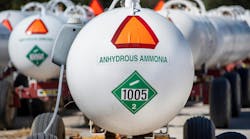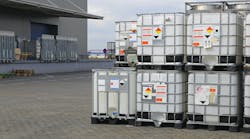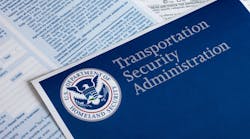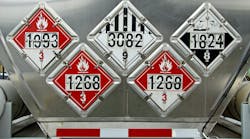The much anticipated—and viewed as unwelcome by some--Phase 2 final rules for commercial trucks and trailers were announced August 16.
The final phase two program is intended to promote a new generation of cleaner, more fuel efficient trucks by encouraging wider application of currently available technologies and the development of new and advanced cost-effective technologies through model year 2027. The stated goal of the Environmental Protection Agency (EPA) and the National Highway Traffic Safety Administration (NHTSA) is to lower CO2 emissions by approximately 1.1 billion metric tonnes, save vehicle owners fuel costs of roughly $170 billion, and reduce oil consumption by up to two billion barrels over the lifetime of the vehicles sold under the program.
For the first time, a set of CO2 emission and fuel consumption standards for manufacturers of new trailers will take effect over a period of nine years, according to a pre-publication version of the final rules. The joint rulemaking has been signed by Secretary of Transportation Anthony Foxx and the Environmental Protection Agency Administrator Gina McCarthy. The rules will become law 60 days after publication in the Federal Register.
The rationale for applying the rules to trailers is that regulators consider trailers to be an integral part of the tractor-trailer vehicle.
In an initial statement, American Trucking Associations officials said they were cautiously optimistic that the second round of the Obama administration’s greenhouse gas and fuel efficiency standards for commercial trucks would achieve the targets set out by the administration and that they hoped the 10-year phase-in period for the regulation would not be unduly disruptive to fleets and manufacturers.
Officials from the Truck Renting & Leasing Association pointed out that the final rule appears to have more stringent benchmarks than the original proposed rule, which called for a 36 percent improvement over 2010 levels by 2027. The Administration estimates the new benchmarks will cut emissions by more than 1 billion metric tons and decrease oil use by 1.8 billion barrels over the course of the lifetime of vehicles purchased under this new rule. However, the final rule keeps intact 2027 as the final target date rather than speeding up that process which was under consideration.
Here are some of the key provisions of the final rule, which will consume 1,690 pages in the Federal Register:
• Phase 2 will affect companies that manufacture, sell, or import into the United States medium- and heavy-duty vehicles, including trailers, buses, and work trucks. The final standards will phase in gradually, beginning in the 2018 model year. New regulated trailers built on or after January 1, 2018 need to be certified to the new CO2 emissions standards. NHTSA fuel consumption standards are voluntary until MY 2021.
• Trailer manufacturers disagreed on the wisdom of implementing a “corporate average fuel economy” (CAFÉ) system on trailers. The final rule reflects that disagreement.
“In order to balance the advantage of an averaging program in allowing for introduction of the most reasonably stringent standards for trailers with the concerns articulated by manufacturers, the final program accordingly limits the option for trailer manufacturers to apply averaging exclusively to MYs 2027 and later for full-aero box vans only,” the final rule states. “We believe this delay provides box van manufacturers sufficient time to develop, evaluate and market new technologies and to become familiar with the compliance process and possible benefits of averaging. This will also allow customers to become more familiar with the technologies and to recognize their benefits.”
• At varying levels of stringency, the standard will apply to two types of vans—those that can be fully equipped with aerodynamic devices and those with work-producing equipment such as liftgates that restrict the full use of aerodynamic devices. It also will apply to “non-box van” trailers, including tanks, platforms, and container chassis. These will be required to use low rolling resistance tires, along with tire inflation systems, but will not be required to have aerodynamic devices.
• Excluded trailers include:
• All trailers with four or more axles.
• Trailers less than 35 feet long with three axles.
• Trailers with an axle spread of at least 120 inches between adjacent axle centerlines. The axle spread exclusion does not apply to trailers with adjustable axles that have the ability to be spaced less than 120 inches apart.
• Miscellaneous trailers such as mobile homes and trailers intended for temporary or permanent residence, office space, or other work space, and carnival trailers.
“However, where the criteria for exclusion identified above may be unclear for specific trailer models, manufacturers are encouraged to ask the agencies to make a determination before production begins,” the final rule warns.
For further information, contact Tad Wysor with EPA [email protected] or Ryan Hagen with NHTSA [email protected].








